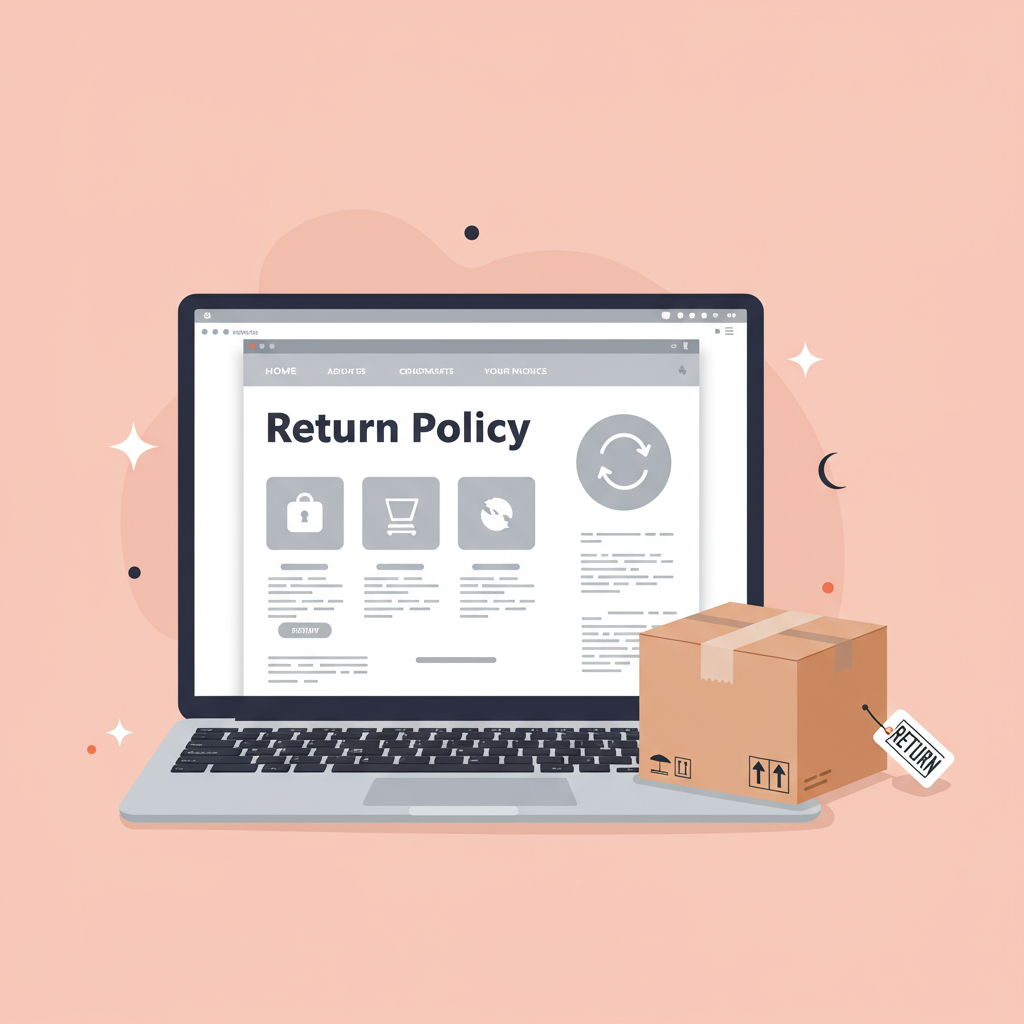Transforming a necessary process into a powerful tool for customer loyalty and business growth on Shopify.
As a Shopify merchant, I’ve learned that managing returns isn’t just a necessary evil; it’s a crucial part of building customer trust and loyalty. A well-defined return policy can actually turn a potentially negative experience into a positive one.
I remember when I first started, my return policy was an afterthought. It was vague, buried deep in my site, and caused more headaches than it solved. That’s when I realized I needed a complete overhaul.
My journey taught me that a clear, concise, and customer-friendly return policy is as important as your product descriptions or your checkout process. It’s a promise to your customers.
So, let me share my insights and best practices for crafting a Shopify return policy that works for both you and your customers. I believe these principles are universally applicable.
First and foremost, your return policy must be easy to find. On Shopify, I always recommend placing links in your footer, on product pages, and even within your FAQ section. Don’t make customers hunt for it.
Transparency is key. I make sure my policy is written in plain language, avoiding legal jargon wherever possible. My goal is for anyone to understand it without needing a lawyer.
One of the most critical elements I define is the return window. I typically offer a 30-day return period from the date of delivery. This gives customers ample time to decide without feeling rushed.
Next, I clearly state the condition required for returns. For most products, I specify that items must be unused, unwashed, and in their original packaging with all tags attached. This protects my inventory.
I also have a clear list of items that are non-returnable. This often includes final sale items, personalized or custom-made products, and sometimes intimate apparel or perishable goods for hygiene reasons.
The method of refund is another point I clarify. I usually offer refunds to the original payment method, but for some specific cases, like gift returns, I might offer store credit.
Shipping costs for returns can be a tricky area. I’ve found that offering free return shipping for defective or incorrect items is a must. For buyer’s remorse, I usually ask the customer to cover the return shipping.
I make sure to outline the exact process for initiating a return. For my Shopify store, I use a dedicated return portal or a simple email request system, providing clear instructions on how to proceed.
This process often involves generating a Return Merchandise Authorization (RMA) number. This helps me track returns efficiently and ensures that when an item arrives, I know exactly what it’s for.
What about exchanges? I treat exchanges similarly to returns, but I make it clear if the customer will be responsible for shipping the new item or if I’ll cover it. Simplicity here is vital.
For damaged or defective items, my policy is very lenient. I always cover all costs, including return shipping, and offer a full refund or replacement. This builds immense goodwill.
I also emphasize the importance of packaging returns securely. I advise customers to use the original packaging if possible, or a sturdy alternative, to prevent damage during transit.
Communication throughout the return process is something I prioritize. Once a return is initiated, I send automated emails confirming receipt, processing, and refund issuance.
Shopify’s built-in features and various apps can significantly streamline this. I’ve experimented with several return management apps that automate labels, tracking, and customer notifications.
These apps often integrate directly with my Shopify order data, making it incredibly easy to manage the entire lifecycle of a return from a single dashboard. It saves me so much time.
Beyond just processing returns, I use them as a source of valuable feedback. I often include a small survey or ask for the reason for the return. This helps me identify product issues or areas for improvement.
For instance, if I see a pattern of returns for a specific size, it tells me my sizing chart might need adjustment. This proactive approach helps reduce future returns.
I also ensure my policy complies with all relevant consumer protection laws in the regions I sell to. This is non-negotiable and protects my business from legal complications.
Ultimately, I view my return policy as an extension of my customer service. It’s an opportunity to reinforce trust and demonstrate that I stand behind my products.
A smooth return experience can turn a one-time buyer into a loyal, repeat customer. It shows that I value their satisfaction above all else.
So, as you refine your own Shopify return policy, remember these principles: clarity, accessibility, fairness, and efficiency. They’ve served me well.
I genuinely hope these insights help you optimize your own Shopify return process. What do you think about this article? Did I cover everything you were hoping for?
By implementing these best practices, I’ve seen a significant reduction in customer service inquiries related to returns, allowing me to focus more on growing my business.
It’s not just about minimizing losses; it’s about maximizing customer satisfaction and building a robust, trustworthy brand presence on Shopify.






